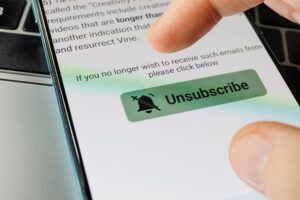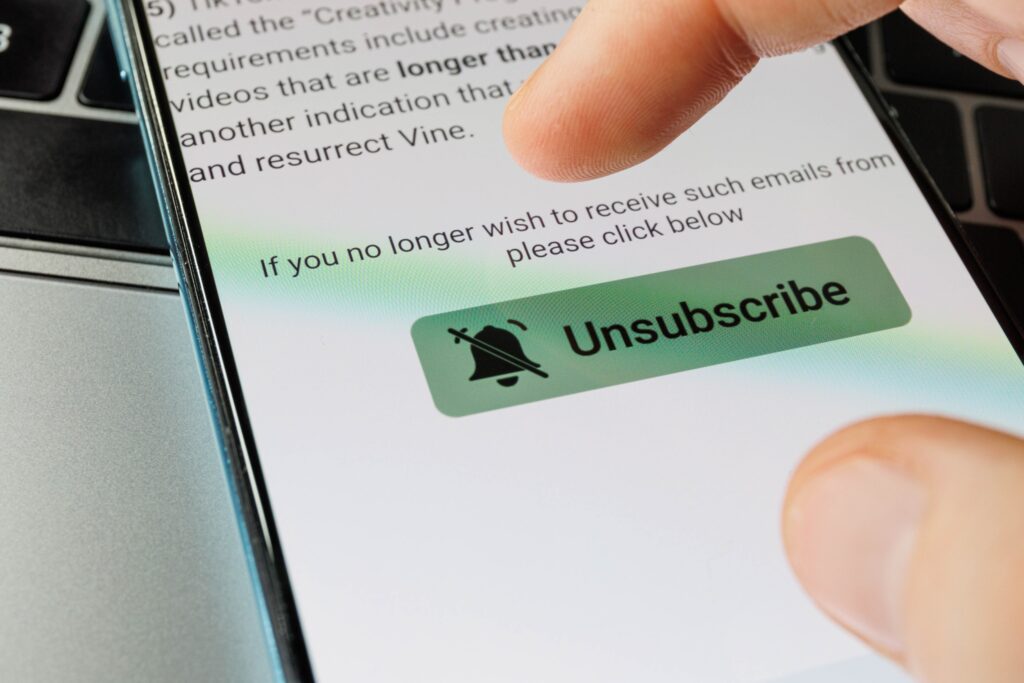
Research shows that professionals who receive more than 100 emails per day spend 80 hours a year sorting through spam messages. For those who receive only 30-60 external emails daily, 11 hours a year is wasted on junk email. In our digital world, it’s easy to say “yes” to everything, especially when email addresses are required to access information that is valuable and relevant. While some email content may be useful, it also comes with a price. Too much information can leave busy professionals feeling overwhelmed, anxious, and distracted. If your inbox is cluttered with emails you never read, it’s time to consider the power of unsubscribing.
The Benefits of Unsubscribing
The truth is, not every email, post, or update is relevant to your goals or adds value to your work or life. Clicking the “unsubscribe” button can be incredibly liberating, allowing you to declutter your mind and inbox, and focus on what truly matters.
When you unsubscribe from emails that are irrelevant, too frequent, or spammy, everything gets quieter. Here’s what you gain:
- Focus: Without endless notifications vying for your attention, you can concentrate on critical goals and priorities.
- Time: Fewer distractions mean you can work more efficiently and have more time for the things that matter.
- Mental clarity: Unsubscribing allows you to distance yourself from information overload, making space for your own creative ideas.
- Security: Some newsletters or emails may include tracking software, share your data, or contain phishing links, so unsubscribing can help protect your privacy and security.
A Simple Test
To determine whether you should unsubscribe from a newsletter or other email content, ask yourself the following questions:
- Do I recognize and trust the sender?
- Do I open and read these emails, or do I delete or mark them as “read” without a second glance?
- Did I sign up for these emails?
- Does the content align with my needs?
- Do I find joy or value in this content?
- Does this information make me feel motivated or stressed?
If you answer “no” to one or more of these questions, it’s time to unsubscribe.
Keep in mind that unsubscribing does not always mean that you will prevent further emails or spam. In fact, unsubscribing to something you never signed up for could make matters worse. Clicking unsubscribe on these types of messages tells the sender you are a real person with a valid address. That sender may then sell your email address to third parties who will proceed to bombard you with more spam. When you receive a suspicious email from an unknown sender, simply mark the email as spam, block the sender, and delete the email without opening it.
A Lesson for Marketers
As a marketer, it’s important to understand that your audience might be feeling this same angst from their overflowing inbox. When designing email campaigns, keep your messaging relevant, valuable, and respectful of your target audiences’ time and attention. Quality trumps quantity when it comes to marketing messaging.
It’s also important to keep spam email regulations in mind when you are the sender. The CAN-SPAM act prohibits businesses from sending messages to individuals who have not opted into messaging. The standards also restrict the use of misleading headers and deceptive subject lines. Physical addresses are also required in commercial marketing emails in addition to a “clear and conspicuous” way for recipients to opt out of future marketing emails
Unsubscribing: A Path to Better Productivity

Ultimately, unsubscribing from and blocking spam email is more than just an inbox cleanse—it’s about editing your life. By removing the content that doesn’t serve you, you can focus on what truly matters—both personally and professionally. So, take a few minutes each day to review your subscriptions and say goodbye to the noise. How will you use the extra 90 minutes each week?

